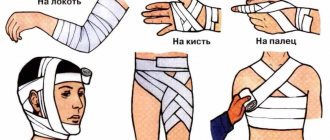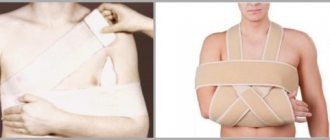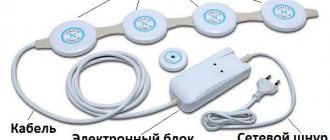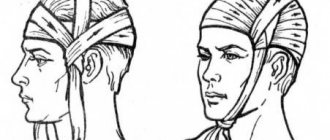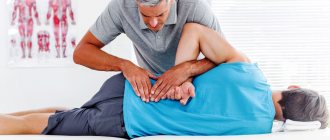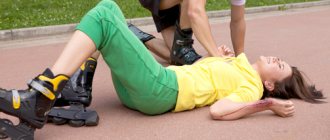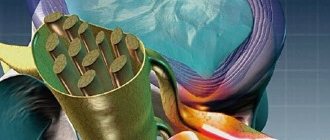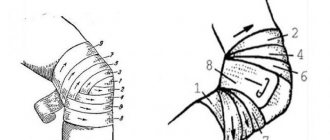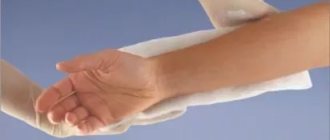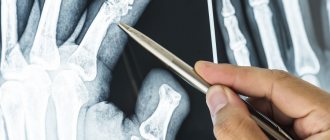Providing first emergency medical care in the event of a traumatic event is one of the most important measures to avoid serious complications with the patient’s health.
Injuries can vary in severity or location of injury. However, the most common of them are injuries to the limbs such as: fractures, bruises, dislocations.
The further consequences of the course of the disease largely depend on how correctly the first aid measures were carried out.
As a rule, when a traumatic event occurs, such as a fracture, the first thing that is required is temporary immobilization of the damaged area. This means that most fractures should be properly fixed in the position in which they were identified.
In such cases, devices such as tires are used, which have different types and designs. They are a way to solve problems in unforeseen situations.
A splint is a device that is specially made from available materials for the purpose of temporary and permanent fixation of injured body parts in a certain position.
The splint not only immobilizes a broken bone and or dislocated joint, but also provides protection and support for the injured segment. Its main purposes are the following:
- Protection of other healthy tissues from splinters and bone fragments, in case of open fractures, during transportation of the patient to a medical facility;
- Preventing further aggravation of the injury;
- Helps reduce pain to avoid painful shock.
When applying a splint, you need to make sure that it supports and immobilizes the damaged area above and below the injured area. This makes it possible to prevent movement of nearby joints, as well as the site of injury.
Tire types
There are different types of splints, but it is customary to distinguish four types depending on the nature of the fracture:
- Universal, or staircase, Kramer splint. This medical splint is a combination of individual parts, thanks to which you can assemble structures of different heights and shapes.
- Dieterichs tire. It consists of sliding parts, its functional purpose is traction. Used mainly for hip fractures.
- Pneumatic medical splint. One of the modern types is a thick zippered cover equipped with a pump for inflating air. It is used to immobilize the hand, forearm, leg, foot, lower leg, and knee joint.
- An improvised tire made from scrap materials. These could be: a straight branch or stick, wire, scarf, sheet. It is worth paying attention to the search for such objects so that there are no sharp ends.
There are other varieties based on cotton-gauze bandages for fixing the head, cervical vertebrae, and shoulder joint.
Dieterichs splint and its application technique
This type is used for hip fractures to avoid movements in the pelvic area. The splinting technique is simple and does not require special knowledge. The design itself consists of two planks, as well as a sole plate. The plates are adjusted to the size of the person: the end of the outer one is inserted into the armpit, the end of the inner one rests on the groin. Cotton pads are placed in the ankle area. The ends of both plates should protrude slightly beyond the sole. A plate is also firmly tied to the sole itself. The human torso together with the structure is tied with belts. The belt pitch is 25-30 cm.
Cramer tire and its correct position
This therapeutic splint is used for fractures of the upper and lower extremities. First, the doctor models the form on himself, then it is applied to the patient’s injured limb, and the voids are filled with cotton wool. The structure is wrapped in bandages. The Kramer splint is also suitable for damaged ligaments and tendons. The application is the same as for a bone injury.
Fixation of various fractures
Fractures are different, so the lining of the tires also has its own characteristics.
The difference between the lower and upper limbs plays a big role. Rules for applying splints for certain types of fractures:
- If the forearm is broken, then three joints must be fixed at the same time: the shoulder, the elbow and the wrist. Moreover, this must be done with the arm bent at the elbow using a fixing bandage that constantly supports the broken limb in this position.
- For hip fractures, it is necessary to completely immobilize the injured leg. The splint is applied from the foot to the armpit to ensure immobility of the knee, hip and lower leg joints with the foot. For this purpose, a Dieterichs splint is used. If it is not there, then you can use a narrow board of appropriate length.
- To fix an injured lower leg, you will need a structure, the beginning of which is applied to the knee, and the end to the foot. It is applied directly to the exposed limb, and cotton wool is placed between the splint material and the protrusions of the bones. If there are bleeding wounds, it is necessary to disinfect them and wrap them with a bandage, only after this can the process of fixing the lower leg be continued. A Kramer splint, applied on three sides, is suitable for the ankle joint.
One is applied on the back side and two on the sides, and the back element should cover half the thigh and end on the foot. After this, all elements are wrapped with a gauze bandage or bandage. Depending on which part of the lower leg is injured, the application of the splint may vary. If the injury affected the lower part, then the fixation begins from the knee joint to the foot, if the upper part - from the knee to the hip joint.
Basic rules for applying splints
If the fracture has open wounds, then before applying any splint, you need to treat the wound with an antiseptic. If the injury is closed, then the structure can be applied to clothing.
The damaged joint is often fixed together with two adjacent ones. For example, fixation of a shoulder fracture starts from the fingertips to the shoulder. If the tibia is fractured, a plate is applied to the knee and ankle joints. This application algorithm is also used for other limb injuries. The rules for applying transport splints are applied when immobilizing the hip joint and spine. Fixation of a hip fracture covers the entire leg. A spinal fracture is accompanied by immobilization of the entire human body.
Read also: What to do in case of ligament injuries
If bleeding is observed, then do not rush to apply a tourniquet; you must wait for the doctor’s instructions. If it is not possible to obtain information from a specialist, then the patient is given a note indicating the exact time of application of the tourniquet.
Applying a splint from improvised material is fraught with the risk that the sharp ends can cut into the victim’s body, compressing nerve endings and blood vessels passing nearby. The bandage is not applied at the fracture site so that pressure does not cause pain.
If a person has an attack of hysteria, it is necessary to get him out of this state as quickly as possible, since the victim may develop traumatic shock. It is advisable to apply ice to the fracture site and give the person pain relief.
The above rules are the basis for any fractures.
It is interesting to read which joints should be fixed by a splint in case of a hip fracture.
If traumatic shock occurs
The main task of a person (and a doctor) providing assistance to a victim of a bone fracture is to monitor his general condition.
With severe pain, traumatic shock can develop, the signs of which are impaired breathing, hysteria, impaired circulation in the body, vomiting, and loss of consciousness. There may also be a violation of the swallowing reflex, which can cause blood, mucus, vomiting to enter the respiratory tract and lungs and result in death. Such situations especially often occur when the victim has open fractures and bleeding. Improper human breathing can lead to brain hypoxia. Therefore, it is important to recognize the symptoms of shock from an injury in time and provide the necessary assistance. The main thing is to normalize the victim’s breathing. The respiratory tract is cleared of vomit, blood or mucus, after which a special air duct is inserted into the mouth or nose. In very severe cases, urgent tracheosonation or ventilation is sometimes necessary.
Splinting for various fractures
Upper limbs
When the forearm is fractured, the bone is fixed with a Kramer splint on both sides: the back and the front. A scarf is placed over the neck and secures the arm in a bent position. The fracture of the shoulder joint is immobilized by fixing two adjacent joints. When a finger is fractured, the affected phalanges are fixed to the adjacent healthy fingers.
Lower limbs
In the absence of available materials, the easiest way is to tie the sore leg to the healthy one. The rules for applying a splint are as follows: the broken leg is covered with plates on three sides, the back one starts from the sole and ends under the shoulder blade, the size of the outer side plate is from the sole to the armpit, the inner side covers the distance from the perineum to the end of the leg. Transport tires are secured with belts. Transportation occurs in a supine position.
Shoulder girdle
If the collarbone is fractured, it is enough to place a cotton ball in the armpit and put a scarf on your arm, thrown over your neck. The scapula fracture is immobilized with an abduction splint with skeletal traction. If there is no displacement of the processes, then the fracture is fixed with a Deso bandage. This is a self-contained design that can be worn for a month.
Ribs
For fractured ribs, splinting is to immobilize them during breathing. The best way is to tie a sheet around the chest, allowing the abdominal muscles to perform the breathing function. The victim should not talk or take a lying position, so as not to damage the internal organs with fragments of the ribs.
Spine
If the spine is damaged, a splint made of hard material is applied to the height of a person. In this case, the peculiarity is that the victim cannot move. It is carefully transferred to the place where the structure is laid, and the body is secured with belts. Belt pitch up to 30 cm.
Pelvic bones
This type of injury, especially a fracture of the coccyx, is often accompanied by severe pain. The patient is immobilized in a lying position with a cushion placed under the hips. Fixation of a femoral neck fracture occurs according to the principle of injury to the lower extremities. Such injuries are dangerous due to damage to blood vessels.
Conclusion
After studying this material with graphic elements and videos, you know how to apply a splint for fractures of the tibia, femur and shoulder girdle (clavicle, arm, shoulder). Be sure to keep this material at hand and promptly provide this most important stage in first aid to the victim - immobilization. The more correctly you provide it, the greater the chance that the patient during transportation will not be able to perform unnecessary unnecessary movements with the injured limb and will not cause himself unnecessary trouble in the form of even greater displacement of bone fragments inside the limb and even rupture of soft tissues and skin. In the latter case, an open fracture will occur, in which case surgical intervention is no longer possible. Be healthy!
Subsequent treatment and rules of patient care
After the victim is taken to the hospital, the bone fragments will be set, if there has been displacement, and a plaster cast . Sometimes open fractures require surgery. In any case, while the patient is in the hospital, doctors monitor him dynamically.
Treatment is as follows:
- drug therapy to relieve pain and reduce the risk of inflammation;
- a special diet to promote bone healing, and possibly a course of vitamins.
After applying a cast, the patient cannot do everything himself. Depending on the location of the injured area, care instructions will vary, but general steps include:
- Using a painkiller and, if the doctor allows, a light massage: this will ease the pain that the victim will experience for a long time.
- Carefully examine the patient's body if he does not get out of bed due to a fracture, as bedsores may form. Sometimes it can be very carefully lifted and turned over, but only with the permission of the doctor.
- Even if a bedridden patient has urinary incontinence at first, he cannot be limited in drinking - the volume of fluid per day should be up to 1.5 liters.
- The need to prevent sudden movements of the patient, ensure compliance with the diet and follow all the doctor’s recommendations.
After the cast is removed, physiotherapy, massage and exercise therapy are prescribed to quickly return the injured limb to its function.
